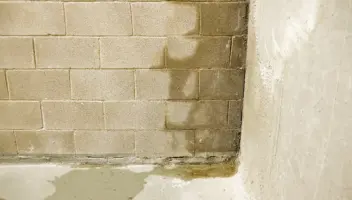Basement Mold Removal 101

Mold growth is often seen in basements. In addition to creating an unpleasant smell, a moldy basement can lead to serious health issues for you and your family. Therefore, it’s essential that you understand what causes basement mold, how to discover it and how it can be prevented and removed.

Causes of Basement Mold
The most common cause of basement mold is excessive moisture. In order for mold to grow, there needs to be moisture, oxygen, and organic material which can often be found in basements. Other causes of basement mold include leaks in basement piping, sump pump failure, water heater failure, poor ventilation, and flash floods.
Discovering Basement Mold
To determine whether there is mold in your basement, you should start by checking the floors, walls, ceiling, furniture, HVAC vents, pipes, and insulation for yellowish stains and slimy, black streaks or patches. You should also ask yourself if you smell must or mildew every time you go into your basement. In addition, it’s a good idea to search for evidence of water entry as mold usually grows on moist surfaces in the basement.
Removing Basement Mold
If you would like to remove basement mold on your own, you should begin by wearing goggles and gloves. Then, scrub the areas with the mold with water and bleach and allow them to dry completely. To ensure that your mold is entirely gone and protect yourself, it is in your best interest to hire a professional.
Preventing Basement Mold
One of the most effective ways to prevent basement mold is to minimize moisture by investing in gutter guards from LeafFilter. When debris begins to build up and clog your gutters, water will begin to pool and leave your home’s foundation vulnerable to erosion damage. Erosion damage can wear away at your basement’s cement lining and lead to cracks that allow water into your basement, making it susceptible to mold growth.
Request a free LeafFilter estimate to learn more about how our gutter guards can prevent basement mold as well as a variety of other costly and annoying home damages such as landscape erosion, a heaving driveway, foundation issues, and structural problems.


